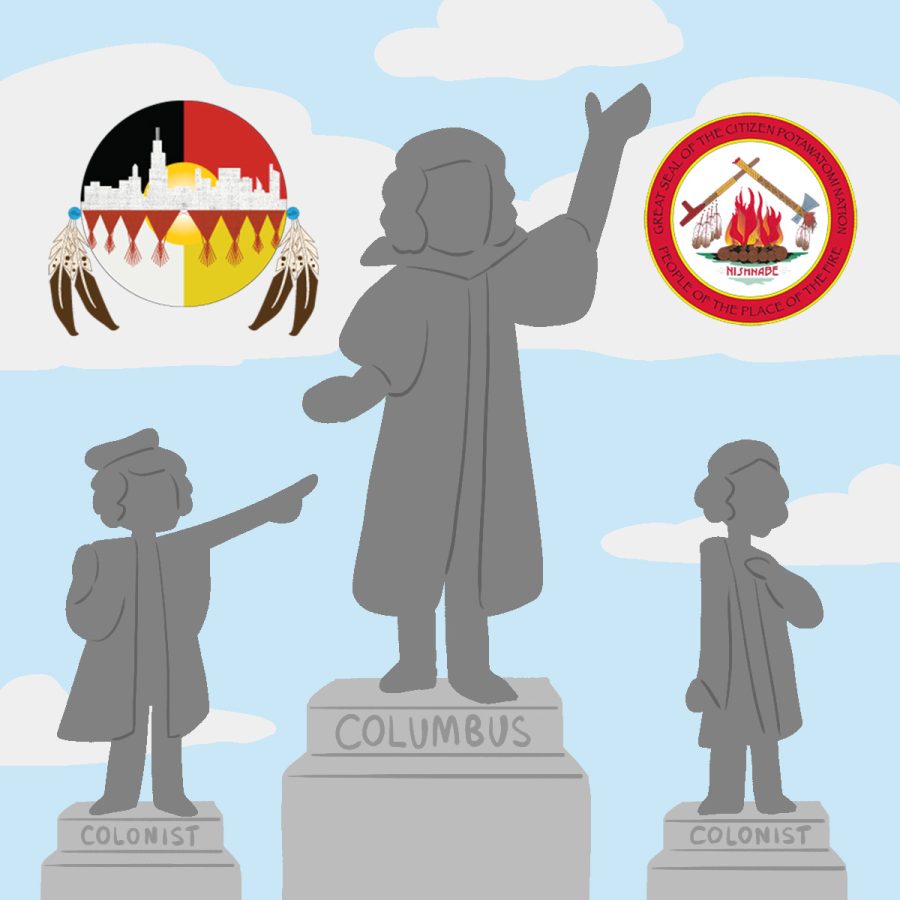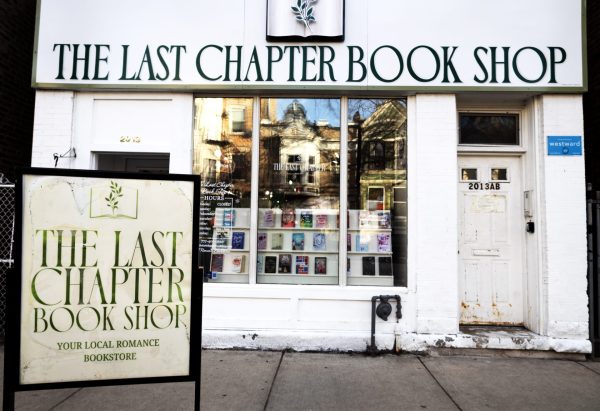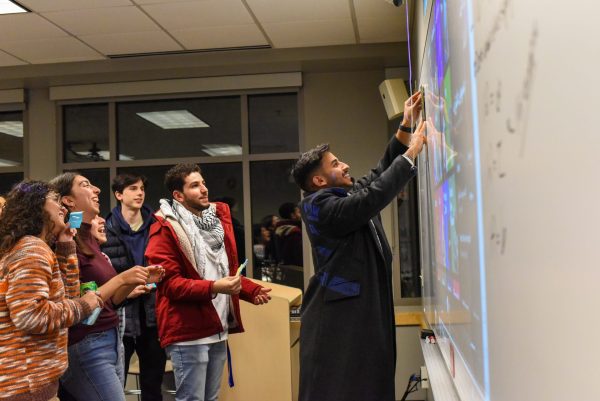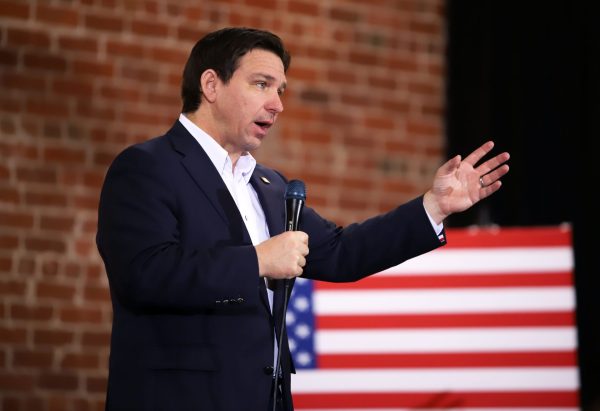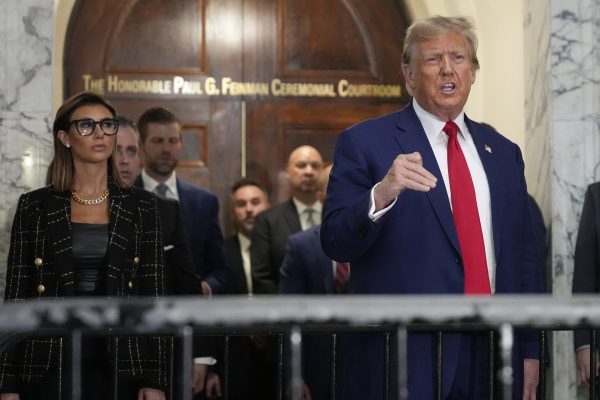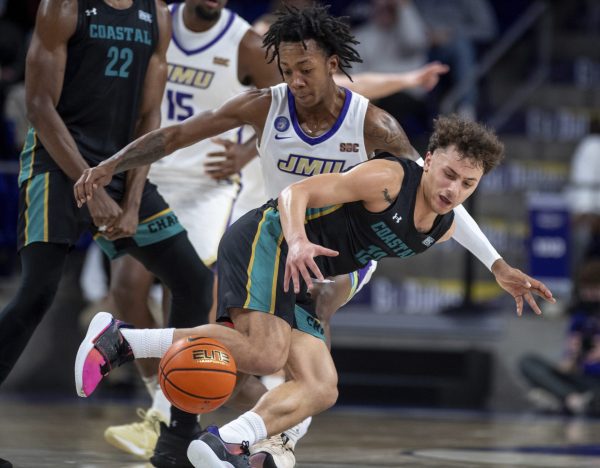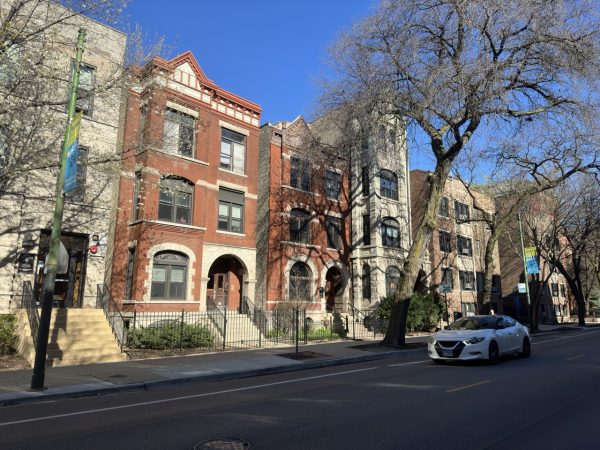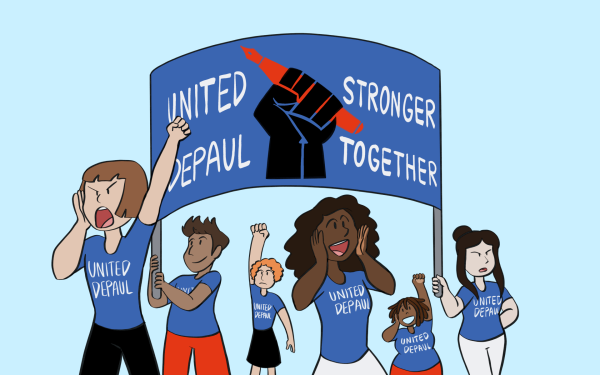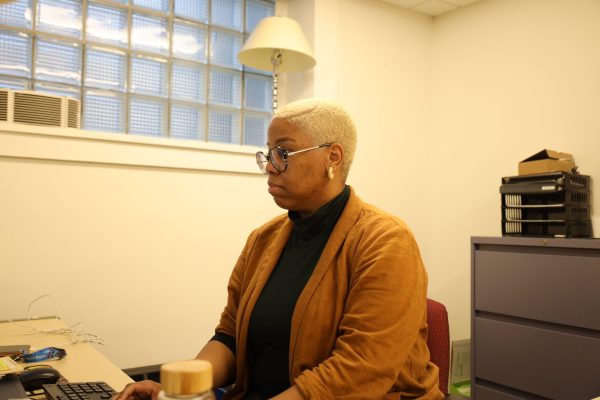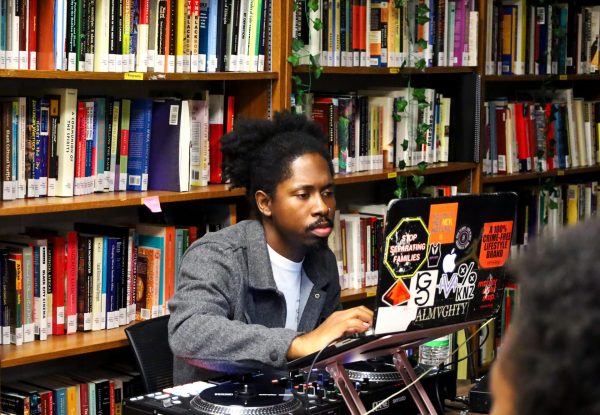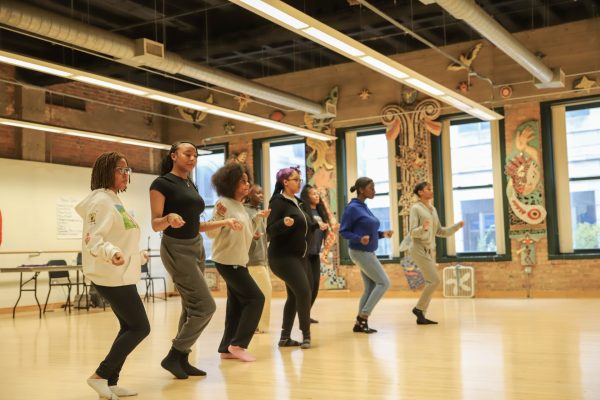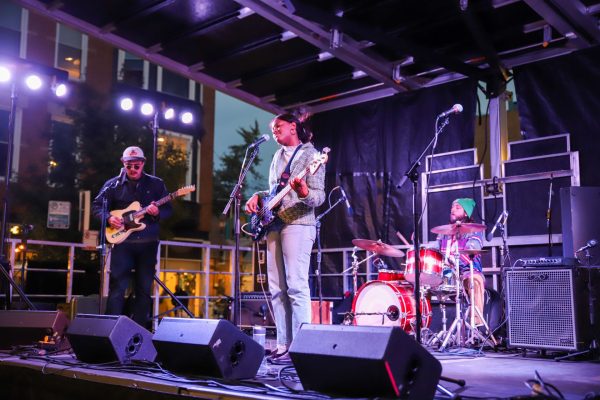Land acknowledgments bring Indigenous visibility to DePaul
On the left, organizations like the Chicago American Indian Community Collaborative (CAICC) work on improving conditions for Native Americans in the Chicago area. On the right, is the symbol for the Potawatomi Nation, one of many native Chicago tribes.
Land acknowledgements are used throughout the country to recognize the tribal lands English settlers colonized. At the DePaul academic convocation held on Sept. 1, President Rob. L Manuel included the official land acknowledgement before introducing faculty.
DePaul’s Indigenous land acknowledgement will soon be hung up in the Lincoln Park Student Center according to Elizabeth Ortiz, vice president for Institutional Diversity and Equity.
The Office of Institutional Diversity & Equity (OIDE) released the university’s land acknowledgement in spring 2021. The acknowledgement focuses on three Native tribes to the city:the Potawatomi, Odawa and Ojibwe. Chicago has the third-largest urban Native population in the US according to WTTW. DePaul has 34 Native and 36 Native Hawaiian/Pacific Islander students enrolled in 2020, according to the 2020 enrollment summary.
Ortiz described the three month timeline of drafting the document.
“We went through nine drafts, we had four meetings with the community, put something on paper, they would give us their feedback, we change it, we come back, we discuss it again,” she said.
Jonathan Ballew (Potawatomi), DePaul alum, worked with University of Illinois Chicago’s Law school to develop their own land acknowledgement.
“I think they’re helpful to allow folks to remember that Indigenous folks have always been here; however, I don’t really think they’re as great as everybody says they are,” Ballew said. “They’re a nice step, but I don’t think they really accomplish much for actual Indigenous people.”
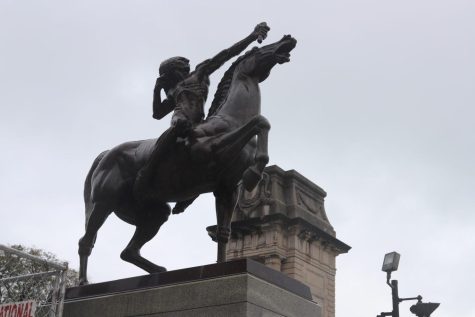
About 8% of the national Indigenous population experienced homelessness in 2022, according to SunRise Native Recovery.
Rachel Boyle, DePaul history professor, described that issues Indigenous people continue to face are often ignored in land acknowledgements.
“Groups like Chicago Indian Village challenged the lack of affordable housing for Indigenous Chicagoans,” she said. “Both U.S. and Chicago history is defined by attempted cultural genocide by settlers and continued resistance and survival of Indigenous people.”
For the Newberry Library, a land acknowledgement is merely a starting point, according to Rose Miron, director of Newberry Library’s McNickle Center for American Indian and Indigenous Studies.
“A lot of people and institutions sort of see them as a very easy fix or a very easy step to take to perform their interest in Indigenous people,” Miron said. “[They] don’t actually take any step beyond that to repair harm that’s been done.”
According to Ballew, an important distinction to make in acknowledgements is recognizing that Native people continue to live on the land.
“It’s not that the people were here, it’s that the people still are here,” Ballew said. “A majority of Native folks have been genocided, but that doesn’t mean that native people aren’t here.”
Mark Turcotte (Turtle Mountain Ojibwe) and DePaul Senior Lecturer in English said that land acknowledgements bring visibility; however, may not bring the space or time to recognize all tribes native to Chicago.
“Chicago has Native people living here from nations all over America,” Turcotte said. “All it takes is a sentence or two in your acknowledgement to say and to recognize today the wide variety of diverse Native nations who have made Chicago their home.”
In 2018, the #LandBack movement became viral on social media highlighting the fight to restore Indigenous rights to their land. Currently, reservation land is held “in trust” by the federal government, according to The Atlantic. Ballew believes this means land acknowledgements should include current fights about land back.
“Tribal nations don’t actually own any of the reservation land,” he said. “[Land acknowledgements] are helpful to get people to be remembering and thinking about Indigenous folks. I think that land back is a much more powerful movement.”
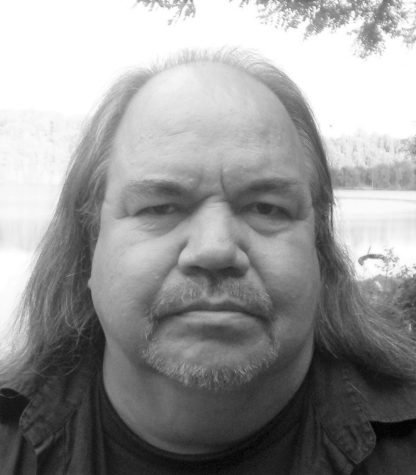
Historical narratives changed to include more Indigenous perspectives during colonization.
“Ignoring the history and continued reality of settler colonialism is, in itself, a tool of settler colonialism,” Boyle said. “By pretending that the United States has not attempted genocide on Indigenous people and refusing to acknowledge that we live on the homeland of Indigenous people past and present, there is no space to imagine and embrace different ways of relating to the land and each other.”
DePaul encourages hosts of events to recite the land acknowledgement at the beginning of university-wide events. Although it is a gesture, Turcotte believes it to be a necessary step to take.
“I think the best thing to say about it is when it’s genuine,” he said. “It’s a good first step. It’s a good gesture. I don’t mind gestures, because sincere gestures lead to bigger and better things and more meaningful things.”
Since it has been released, the land acknowledgement has been revised once. Jose Perales, director of Diversity Operations who also worked on the university’s land acknowledgement, has worked in higher education diversity spaces for 37 years and felt humbled by the experience.
“Working with this here with colleagues, just for me, highlighted personally how much I was learning,” Perales said. “Meaning that there’s always something we can learn, we have to approach this with humility and open ourselves to understanding the communities and the processes in a very different way.”
The statement will continue to be a “living document” according to Ortiz. Edits will be made as DePaul receives community feedback.
“I feel for the most part what I encounter in DePaul is genuine,” Turcotte said. “The people, the faculty that I work with at DePaul, the staff at work at DePaul are genuine, sincere people. I feel like I’m allowed to be who I am a Native person, a Native faculty member, a Native artist, writer and poet.”
Contested Statues around Chicago:
1. Balbo Monument:
Gift from fascist director Benito Mussolini and celebrates Italo Balbo; Italian aviator integral to the rise of Mussolini.
- Confederate Mound In Oak Woods Cemetery
The confederate mound marks a mass grave containing the remains of more than 4,000 Confederate prisons.
- Douglass Park
Recently changed, the park was originally named after Patrick A Douglas an outspoken opponent to the abolishmnet of slavery: ‘Douglas Park.’ It was changed to ‘Douglass Park’ after Fredrick Douglass, former abolitionist and activist for racial equity.
- Washington Park
Seeking the removal of the statue of George Washington.
- Chetnik Monument of Drazo Mihajlovic
Celebrates the remembrance of Drazo Mikajlovic who sought to create Greater Serbia through ethnic cleansing during WWII.


